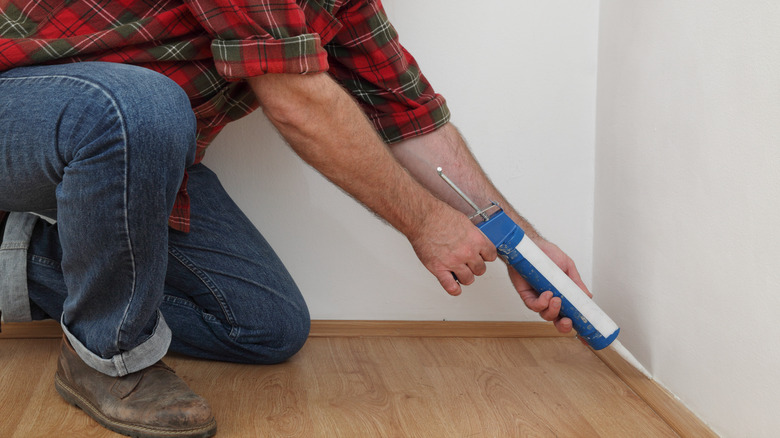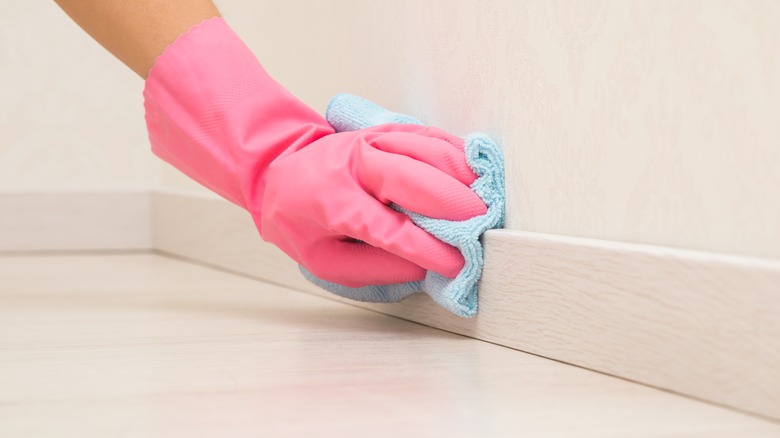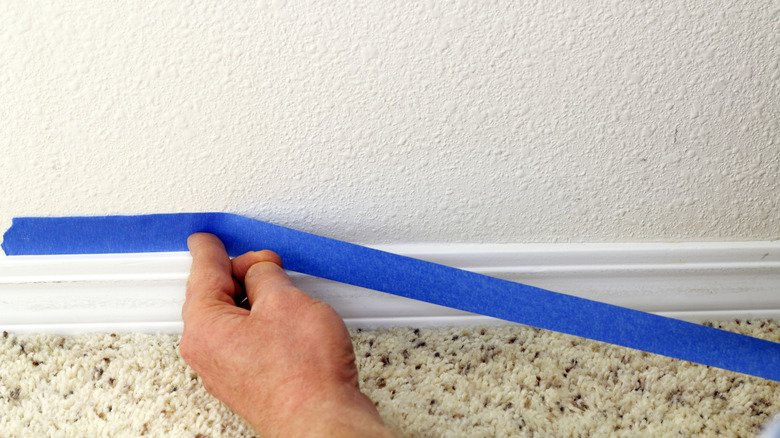The Best Way To Caulk Baseboards Without The Mess
Caulk is a type of sealing agent made of different materials like latex or silicone, designed primarily to fill various gaps around your home. Windows, doors, bathtubs, tiles, and baseboards are all items that people frequently either seal or fill with different types of caulk. According to Drill Warrior, one of the main reasons people caulk around their baseboards and other areas of their home is to create a smoother visual transition from the board to the wall.
There are also quite a few more practical reasons to caulk your baseboards. For example, a watertight caulk can help protect against water damage underneath the baseboards. A smooth line of caulk can also prevent bugs from burrowing underneath the boards or floors. Caulking is a pretty self-explanatory process, but that doesn't always mean it's the neatest or most seamless. There are a few things you can do to ensure the neatest possible caulking job, though.
Preparation
One of the most important ways to ensure your caulk applies as neat and mess-free as possible is to make sure the application site is clean. As Drill Warrior points out, caulk needs to be able to stick to the wall, floors, and baseboard, and if there's dirt, grime, or dust coating the surfaces, the caulk may not adhere and create a mess. It could also mean dirt gets trapped in the caulk, creating a bumpy, ugly finish.
Luckily, cleaning your baseboards is incredibly simple. According to Pro Housekeepers, all you need to do is give it a quick wash with dish soap and water. If you want to go a step further, use the brush or handheld attachment on your vacuum first to get rid of any hidden dust. You should also clear any furniture or other obstructions out of the way so you don't accidentally get caulk on it or block your range of motion.
Painter's tape
There are a few ways to prevent your caulk from getting too messy during the actual application, too. One easy way to prevent mess is to use painter's tape, according to The Craft Patch. This is especially useful for applying caulk to baseboards since the painter's tape will adhere properly to your walls. Simply apply the tape along the edge of your baseboards. Then, squeeze out your caulk. The trick here is to use your fingers to press it in and smooth it over. Slowly remove the tape while the caulk is still wet, and you should have a perfectly neat, non-messy caulk application.
You should also have a way to clean up any unforeseen errors. For painter's or latex caulk, this is as simple as keeping a rag and water on hand. However, if you're using silicone caulk on your baseboards, water won't do anything. In this case, Waterproof Caulking & Restoration recommends using either vinegar, alcohol, WD-40, or isopropyl alcohol. Let it sit on the unwanted caulk for a while, and once it's softened, use a putty knife or flathead screwdriver to gently scrape it off.


